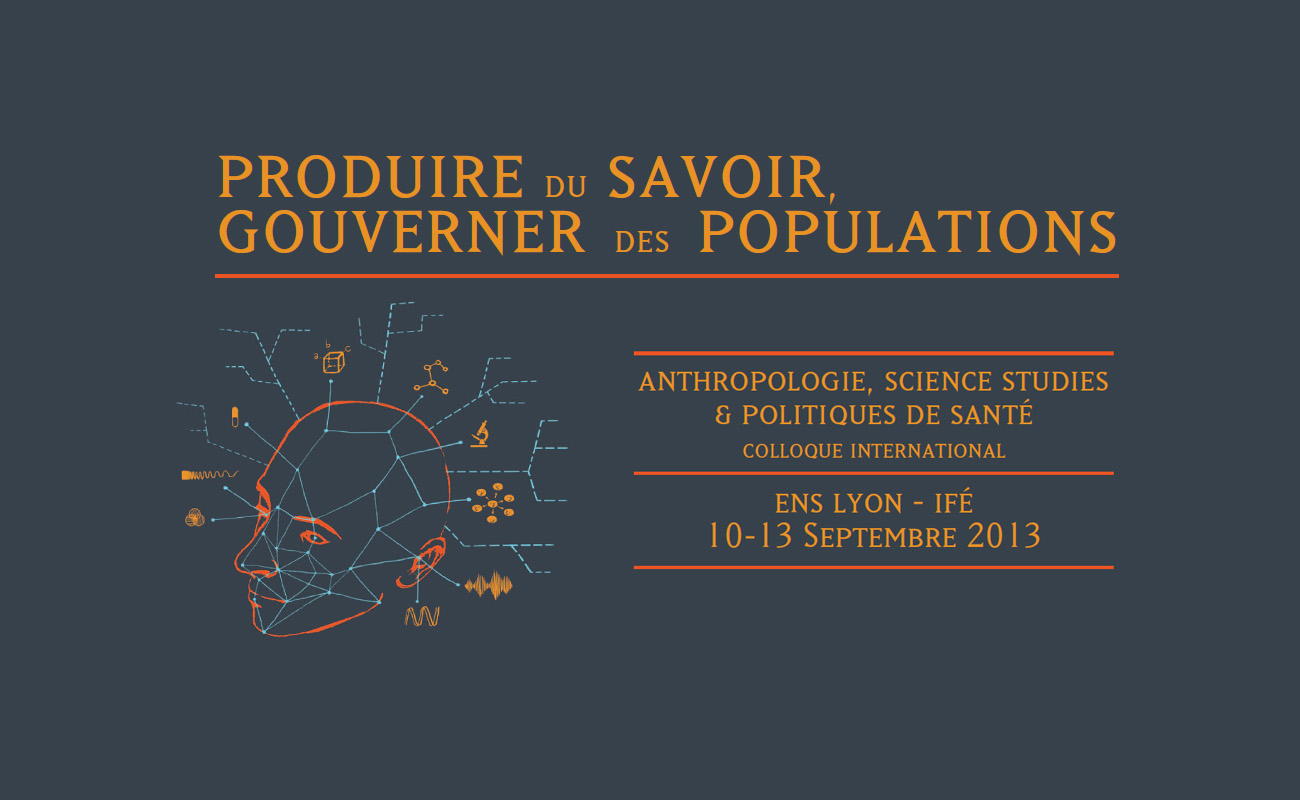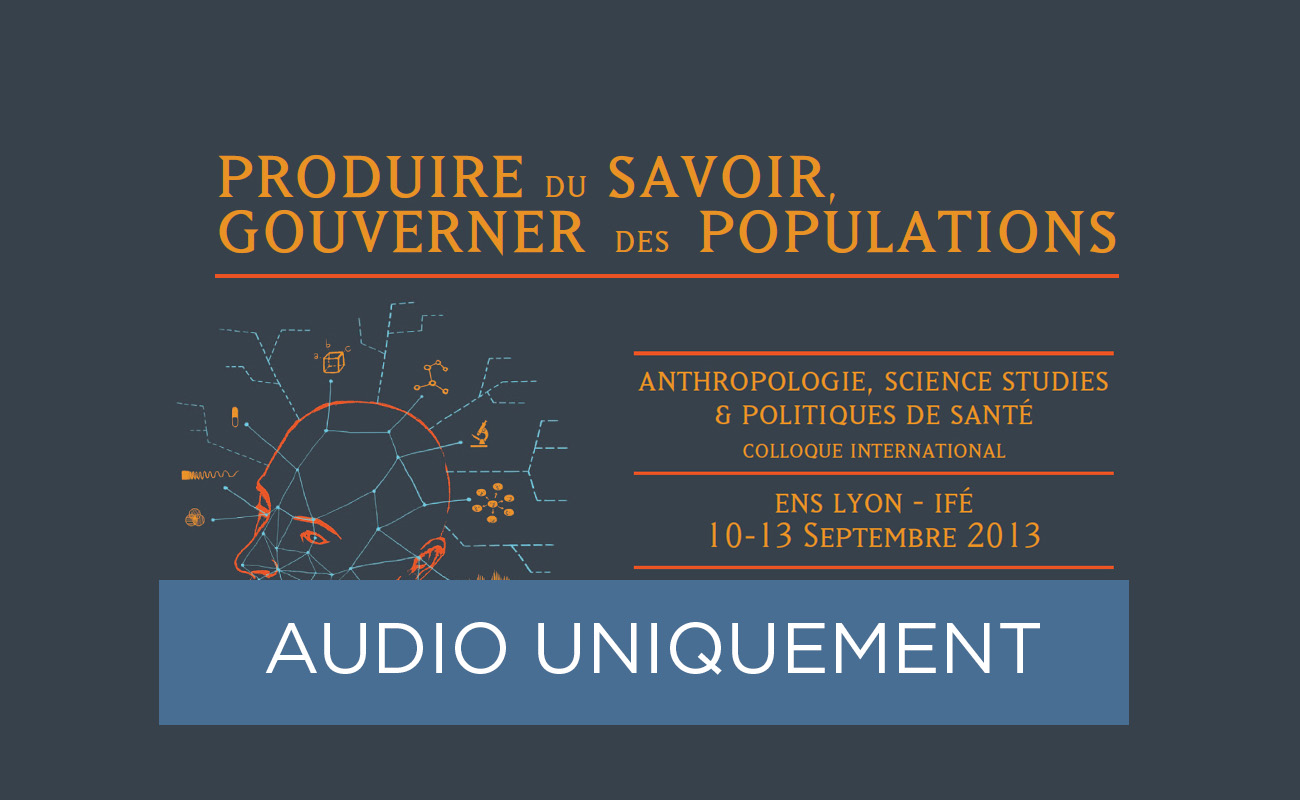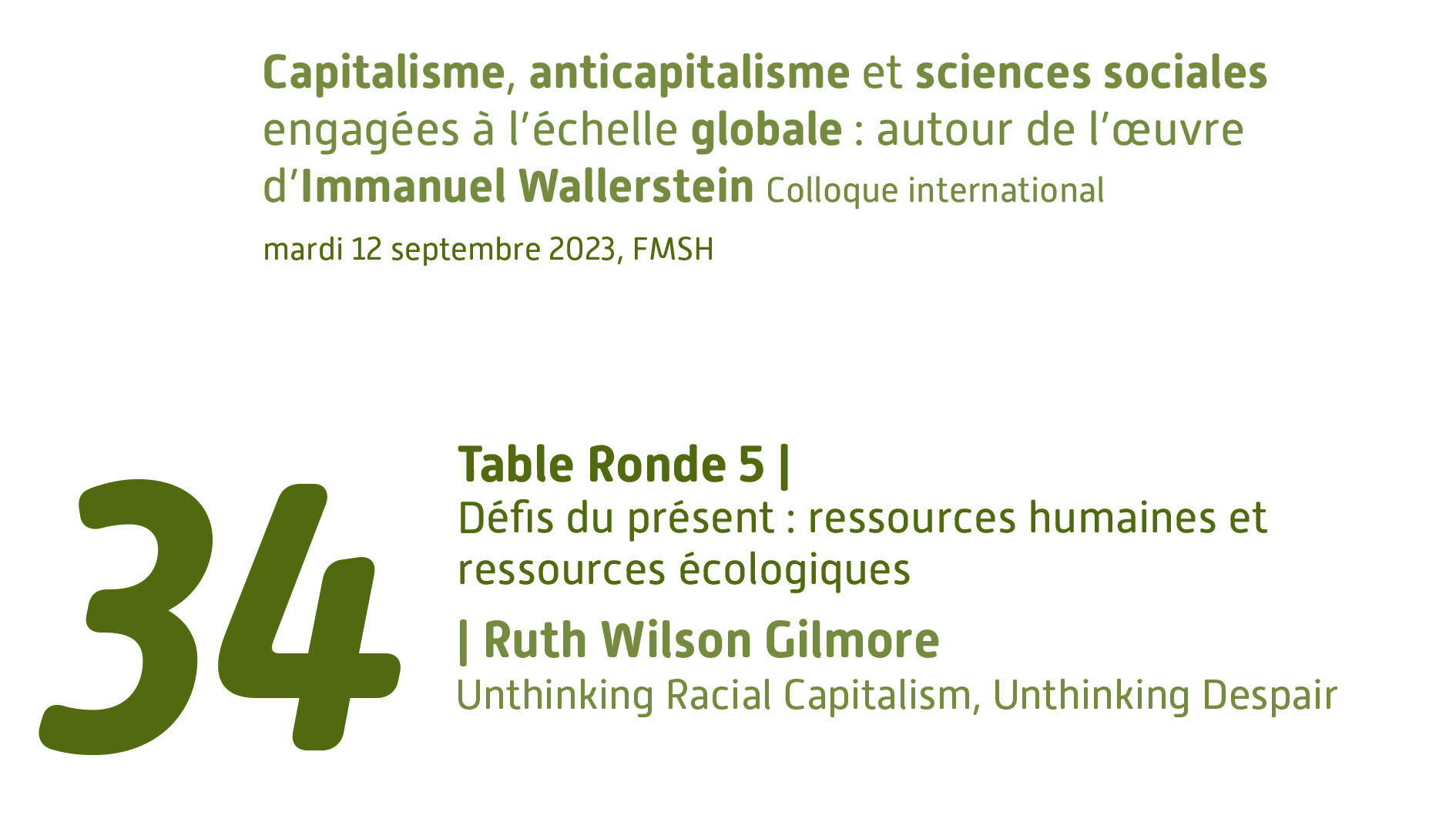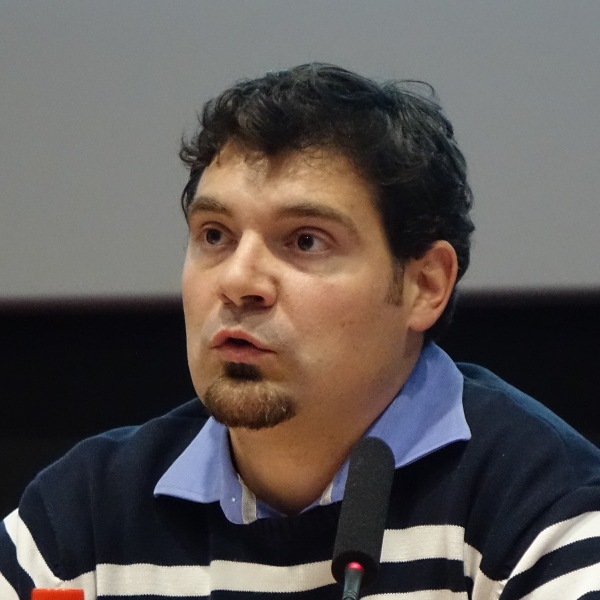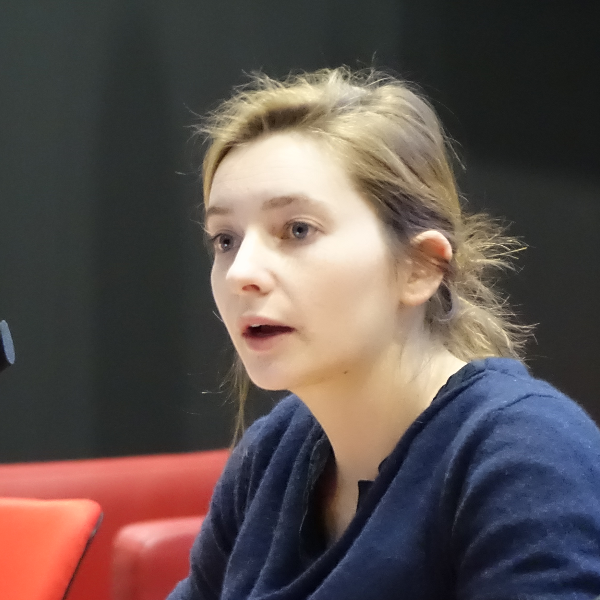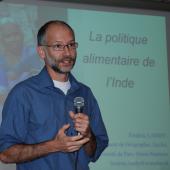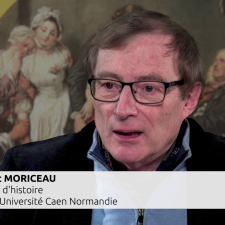Notice
Geographies of responsibility: Spatial and temporal domaining in virtual drug development
- document 1 document 2 document 3
- niveau 1 niveau 2 niveau 3
Descriptif
Global health’s new ‘geographies of responsibility’: Spatial and temporal domaining in virtual drug development
The organization, funding and implementation of global health research is undergoing transformative change. The effective development of new therapies against tropical diseases requires, we are told, new forms of collaboration between private and public actors. Pharmaceutical companies, academic research institutions and philanthropic organizations must join forces in drug development. Over the last decade, a plethora of public-private partnerships have emerged to tackle perceived ‘market failure’. Along with patent pools, online databases of proprietary assets, and ‘open laboratories’, these arrangements are changing the landscape of property relations across the distributed networks of global health research. They not only challenge the modernist distinction between public and private, but also highlight the ‘complex domaining effects’ (Hayden 2010) these categories themselves entail. In this paper, we turn to the spatial and temporal dominating that ‘virtual’ drug development occasions in global health research. If partnership is the watchword of development, then the virtual is the arena in which such partnership is to be constituted. Indeed, a key selling point of these networks is their distributed nature, the absence or levity of a permanent organizational infrastructure anchoring the research activities. Intellectual property rights (IPRs) are central to the rationale and operations of these networks, but not in the way economic theory would predict. Rather than being used as a tool to exclude competitors from the use of a particular innovation, IPRs are presented as the lever the enables new forms of collaboration, the attractor that binds diverse interests to a shared mission. It is the sharing of IP, and proprietary assets more generally, that creates and gives material reality to new drug development networks. Instead of being used to demarcate public and private domains, property rights are here deployed to increase the porosity of that boundary.On the basis of ongoing ethnographic research into global health collaborations, documentary analysis and interviews with participating actors, this paper explores the work afforded by the discourse of the virtual. Drawing on the sociology of expectations, we interrogate the promissory nature of drug development partnerships, and linked to this, their ability to colonize the future landscape of global pharmaceutical markets. We explore the traditional exclusionary function of property rights in this world of seemingly unfettered collaboration. When ‘partnering’ becomes the operative term and sharing the constitutive mechanism of expanding research collaborations, how are the limits of the network produced, where and how is the network cut? We turn to to the anthropological literature on gift-giving and inalienable possessions to understand the boundaries of participation in the moral fold of partnership, and how the definition of these boundaries transform both the targets and agents of drug development initiatives.
Global health’s new ‘geographies of responsibility’: Spatial and temporal domaining in virtual drug development
L’organisation, le financement et la mise en place de la recherche en santé globale est dans une dynamique de transformation. Le développement de nouveaux traitements pour les maladies tropicales, exigerait de nouvelles formes de partenariats public-privé. Au cours de la dernière décennie, une pléthore d’alliances de cette nature a émergée. Plusieurs types d’arrangements ont été créés, lesquels modifient la perception de la propriété et mettent à mal la dichotomie public-privé. Si le partenariat est un élément clé du développement, l’espace virtuel constitue l’arène au sein de laquelle ce partenariat doit se construire. D’ailleurs une caractéristique de ces réseaux est leur dispersion, l’absence d’une infrastructure ancrant/localisant les activités de recherche. La propriété intellectuelle en tant que levier permettant de nouvelles formes de collaboration est au cœur de leur mode de fonctionnement. Loin donc de servir à séparer le public et le privé, la propriété intellectuelle accroît ici la porosité de cette dichotomie. Sur la base d’un travail de recherche ethnographique en cours au sein d’alliances en santé globale, l’analyse de documents et des entretiens avec différents acteurs, ce papier explore le travail que permet le discours du virtuel. En se basant sur la sociologie des espérances, il interrogera la nature engageante des alliances autour du médicament, leur capacité hégémonique et le rôle structurant de la propriété intellectuelle. L’analyse se s’appuiera sur la littérature autour de l’échange, la possession inaliénable pour comprendre les frontières de l’espace moral du partenariat d’une part et comment la production de ces frontières transforme les objets et les acteurs.
Dans la même collection
-
Experimental Communities: Mediating locality in clinical trial sites in South Africa
ReynoldsLindseyExperimental Communities: Mediating locality in clinical trial sites in South Africa More than twenty years into the HIV epidemic in South Africa, the impacts of HIV/AIDS and other diseases, and the
-
Le terrain africain dans la construction du calendrier vaccinal français (1970-1990)
ThomasGaëtanStretching comparisons : African field in French vaccination schedule (1970-1990) During the second half part of the twentieth century, epidemiologists of vaccines and infectious diseases had
-
Les usages de l’EBM du local au global
RichterVitor SimonisGellyMaudValenzuelaLeonardoVitor Simonis Richter “Births and data: artifacts and mediations in the everyday practices of the production of population in Porto Alegre, Brazil.” Maud Gelly “Les armes de la critique et la
-
Entre gouvernement et subjectivation : le recrutement des sujets de recherche en cancérologie
DerbezBenjaminBetween government and subjectivation : the recruitment of subjects in cancer clinical research Clinical trials are a core practice of oncology, which is marked by a « culture of experiment » (Löwy,
-
Preuves incertaines : échelles, corps et environnements dans les sciences de l’obésité
SanabriaEmiliaUncertain evidence: scales, bodies and environments in obesity science This paper examines the uncertainties raised by flows operating between the production of evidence and the making of policy in
-
-
Regulating EBM standards: Guidelines for guideline development
KnaapenLoesRegulating EBM standards: Guidelines for guideline development My doctoral dissertation is entitled In search of standards that avoid standardization: the production and regulation of evidence based
-
Usages politiques et sociaux du registre biomédical
SubhadeeptaRayBauerSusanneBauer Susanne Modeling population health. Reflections on the performativity of epidemiological techniques in the age of genomics Like accounting in the world of business, practices of quantification
-
Experimentality, locality, and the gut: Treatment and the internal frontiers of the body
CousinsThomasExperimentality, locality, and the gut: Treatment and the internal frontiers of the body The paper examines the emerging production of a standardised body of knowledge concerning gut functioning in
-
Weighting bodies in the South Pacific: the BMI index in the Kingdom of Tonga
CottinoGaiaWeighting bodies in the South Pacific: the BMI index in the Kingdom of Tonga Weighting bodies in the South Pacific: the BMI index in the Kingdom of TongaAccording to the 2000 WHO Report on Obesity
-
Savoirs négociés, savoirs traduits
BonvaletPerrineCaremelJean FrançoisGrahamJanice ElizabethBonvalet Perrine Diffusing Medical Knowledge to Developing Countries : The Role of a Medical Network in the AIDS Care Policy in Benin. The prevailing role played by international organizations in
-
Randomised controlled trials, health agencies and consumer organisations
GiamiAlainRandomised controlled trials, health agencies and consumer organisations: the case of Intrinsa and Flibanserin Randomized controlled trials (RCT) are now considered the ‘gold standard’ of clinical
Sur le même thème
-
Table ronde 5/ Ruth Wilson Gilmore, Unthinking Racial Capitalism, Unthinking Despair
GilmoreRuth WilsonDans le cadre de ses 60 ans, la Fondation Maison des sciences de l'homme organise le colloque international "Capitalisme, anticapitalisme et sciences sociales engagées à l'échelle globale : autour de
-
Paris transformé. Le Marais 1900-1980 : de l’îlot insalubre au secteur sauvegardé Onglets principau…
Historienne de l’urbain, Isabelle Backouche présente son dernier livre en montrant comment s’articulent la gestation et le lancement d’un aménagement parisien et la volonté partagée par plusieurs
-
Risque climatique et réactivité des populations urbaines vulnérabilisées face à la montée des eaux …
Partant des trois principales étapes adaptatives des populations exposées aux risques d'inondation dans l'histoire en France (affolement des populations, débat entre experts et prise de décision)
-
Paysages et environnement en Vallée de Montmorency aux XVIIe et XVIIIe siècles
Entre la décennie 1640 et l’extrême fin du XVIIIe siècle, la vallée de Montmorency constitue, grâce à son environnement, une région privilégiée pour observer les relations que les sociétés humaines
-
Les marins des paroisses littorales et rurales : des terriens comme les autres ? Le cas des côtes n…
Le nombre des pescheurs de Plérin que nous avons vérifié [...] se monte à 40 personnes, dont plusieurs d'entre eux sont classés, et quelques-uns navigateurs terreneuviers, ceux qui ne sont point dans
-
Le rural vu par le prisme des pratiques habitantes : état des lieux et enseignements pour les pouvo…
Le dynamisme des territoires ruraux, leur attractivité sur les plans démographique et économique, ont été permis et reposent aujourd’hui sur une mobilité généralisée, facile et peu chère, qui permet
-
L’infanticide de routine en Italie rurale, XVIe – XVIIIe siècles
Phenomène courant, l’infanticide est largement invisible aux pouvoirs publics laïcs et ecclésiastiques. L'etude porte sur les sex-ratio bases sur le baptême et sur les recensements ecclésiastiques des
-
Renouveau des campagnes françaises : dynamiques sociodémographiques et spatiales
L’intervention consiste en une présentation de la thèse – et de ses prolongements – que j’ai soutenue en décembre 2012 sur la tendance au renouveau démographique des campagnes françaises amorcée dans
-
Les migrants internationaux, acteurs de la transition agricole
Les migrants internationaux, acteurs de la transition agricole. Éclairages à partir des campagnes du Sud-Ouest français Les migrants internationaux sont devenus des acteurs majeurs des systèmes
-
Du périurbain aux campagnes urbaines : habiter autrement la métropole
Le périurbain est passé sous les feux des projecteurs après les années 2000 comme contre-modèle de la ville durable, il est pourtant l'espace de vie de 30 % des Français classés souvent parmi les
-
Nourrir un milliard d'hommes : la politique alimentaire de l'Inde
La menace de famine de 1965 en Inde replongeait celle-ci dans les souvenirs des crises alimentaires coloniales. Pourtant, deux décennies plus tard, grâce à la révolution verte, l'Inde exportait des
-
La mémoire des paysans
Après la révélation qu’a été pour ses nombreux lecteurs La Mémoire des Croquants (1435-1652), Jean-Marc Moriceau poursuit ici sa passionnante enquête sur la vie de nos ancêtres paysans depuis le


